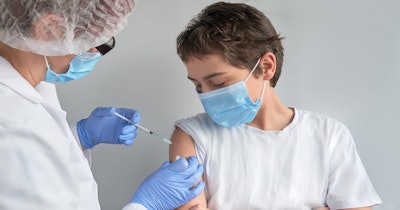
The U.S. National Institutes of Health (NIH) has begun an early-phase clinical trial of its second-generation universal flu vaccine candidate.
A universal flu vaccine could protect people against all strains of influenza, potentially ending the need to predict which strains will be circulating months in advance of the season and updating vaccines each year. The current system can result in vaccines that have limited efficacy if the prediction of which strains will be circulating in the flu season is inaccurate.
“An ideal universal influenza vaccine could be taken less frequently than once a year and protect against multiple strains of influenza virus. With each new universal influenza vaccine candidate and clinical trial, we take another step closer to that goal,” Hugh Auchincloss, acting director of the National Institute of Allergy and Infectious Diseases, said in a statement.
Multiple research groups have tried to develop universal flu vaccines, adopting approaches such as the targeting of conserved regions of the virus to provide protection against multiple strains, but the effort has yet to yield a commercial product. The NIH is one organization trying to make a breakthrough.
In 2021, the institutes started a phase I trial of FluMos-v1, a vaccine that consists of 20 hemagglutinin (HA) epitopes arranged on self-assembling nanoparticle scaffolds. The idea was to display the epitopes to stimulate antibodies against multiple influenza strains and thereby provide broader protection than the current seasonal flu vaccines.
The new clinical trial is testing FluMos-v2, an adaptation of the first candidate that could give protection against a wider variety of strains. The first-generation candidate displays HA from four influenza strains, two from type A and two from type B. FluMos-v2 adds HA from two more influenza A viruses.
A study of FluMos-v1 is continuing and is scheduled to finish early next year, but the NIH has decided to trial its second-generation candidate in parallel. The FluMos-v2 study will enroll 24 healthy volunteers to receive two intramuscular injections of the vaccine candidate 16 weeks apart. Initially, the NIH will evaluate a 60-mcg dose, but plans to increase that to 180 mcg if no safety issues are seen in the first three participants.
The NIH plans to enroll 12 participants at each dose level, although it can increase the size of the trial to 35 subjects if needed, and evaluate them for 40 weeks after the first vaccination. This timeline positions the NIH to track subjects through the 2023 to 2024 flu season, although the primary and secondary endpoints look at safety and tolerability and antibody responses rather than protection from infection.



















